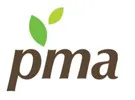Sustainability has been a hot topic for businesses and consumers alike for several years now, and while COVID-19 has impacted consumer behaviors around packaged goods to a degree, being more sustainable is still a consideration, including for the floral industry. Cost-containment and price for both packaging and shipping are often primary drivers; however, participants on PMA’s June 24 Virtual Floral Roundtable shared information on several packaging alternatives that can be considered both sustainable and cost effective. Panelists also discussed the importance of creating box standards for shipping floral product, which they say will increase efficiencies across the supply chain, lower costs, improve packing and transport, and protect product from damage during shipping and distribution.

Floral packaging
For floral packaging, there’s no easy or perfect solution, but changes can be made to move the needle regarding sustainability, according to the panelists. Retailers and suppliers need to gauge their market to determine what’s most important. Price points vary by option, and price is often a primary driver for suppliers. Packaging options include paper packaging that’s compostable and recyclable plastics.
Packaging can be considered sustainable based on materials that are sourced, such as FSC paper and bio-based resins made from corn or sugar cane versus fossil fuels, which are not renewable.
As for end of use, considerations include whether the floral packaging is biodegradable, compostable, or recyclable. Paper is compostable, but if consumers don’t compost on their own or have access to or use an industrial composting center then paper packing can end up in the trash. Some stores have their own drop-off recycling centers for flexible plastics. Paper sleeves are being used in Europe, but mostly for potted plants. Most European retailers are opting for reducing the amount of flexible plastic packaging used. Flexible plastics, including floral packaging, represents about 18 percent of the $145 billion plastics industry. Reducing the size of floral packaging, including thickness, can make a significant difference. One panelist said such changes resulted in a 10 to 38 percent reduction in the amount of plastics they use.
The COVID-19 pandemic has, at least temporarily, increased consumers’ desire for single-use packaging. One panelist said consumers are concerned about products and packaging being touched multiple times. Grab-and-go bags with handles have been popular with consumers wanting to get in and out of stores more quickly.
Labeling is another consideration, and a panelist noted that all-natural, edible stickers are on the market, as well as dissolvable stickers made from cellulose and wood pulp. Options need to be evaluated; however, since floral products are placed in wet packs and buckets.
Panelists say creating box standards for shipping will be a win-win
According to participants on the Virtual Floral Roundtable, not having a standard box size for shipping “fails the flowers.” Growers, a retailer and shipper shared their experiences and the benefits of they’ve seen using standard-size boxes for transporting floral. While the shift does take adjustments at the farm level, panelists said it does work, creates efficiencies, eases handling, saves money and results in improved flower quality.
Up to 20 percent more flowers per pallet can be shipped if boxes are the same, standard size. Standard-size boxes of flowers packed in a pallet becomes one unit. The pallets can be configured more easily to fit in plane cargo holds and the integrity of the pallet is maintained. “Too many box sizes cause havoc from the landing point on,” said one supplier. “If everyone uses the same sizes, we won’t have issues with the structures of pallet. Once you have issues with the structure, you damage the product.” Standard-size boxes improve efficiency and handling at the distribution center and store level as well.
Standardization is critically important for sea freight, which requires cold air flow to circulate from the bottom of the pallet up through holes in boxes that are aligned.
PMA has convened a task force to gather information and work with the industry to develop box standards.
PMA's Next Floral Round table will be held on Wednesday July 15th at 12:45 PM EDT

Review of First Half of 2020: PMA reviews floral data from IRI for first 6 months of 2020 on the floral category to identify and discuss opportunities for next year. For registration information head to www.pma.com.
